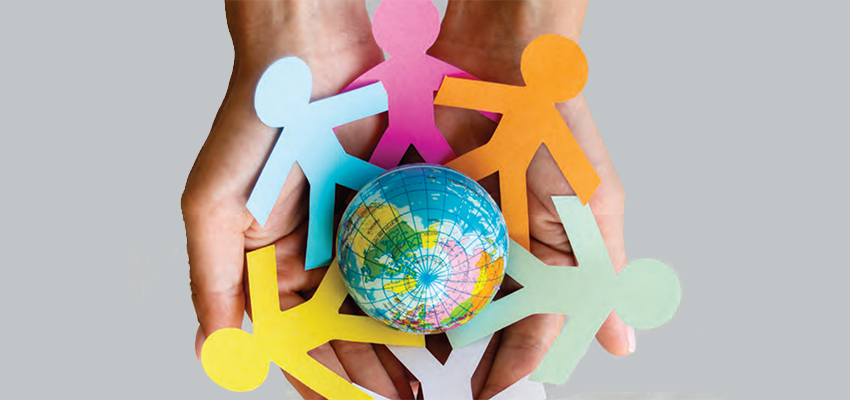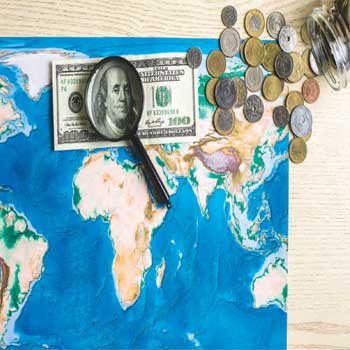G-20 Presidency What India can do for global good

There are a plethora of things India can achieve towards global good with its presidency of the G-20, given its natural advantages of population, diversity, culture and collective consciousness…
India assumed the G-20 presidency on 1st December 2022 for one mandated year. On that occasion, our Prime Minister had said, “Today, India commences its G-20 Presidency. As India assumes this important mantle, I ask myself: Can the G-20 go still further? Can we catalyse a fundamental mindset shift, to benefit humanity as a whole? I believe we can.” The theme announced by the government is that India’s G-20 Presidency will work to promote a universal sense of oneness and hence it will be ‘One earth, One Family, One Future’.
Housing one-sixth of the humanity and with its immense diversity of languages, religions, customs and beliefs, India is a microcosm of the world, as articulated by the Prime Minister. When we are in the midst of an all-important global event, hosted by us, it becomes most necessary to know more about G-20.
What is G-20?

The G-20 or Group of 20 is an inter- governmental forum comprising 19 countries and the European Union. It works to address major issues related to global economy, international financial stability, climate change, sustainable development, etc. It was founded on 26th September 1999 by the Group of Seven after the Asian financial crisis. Initially, it was a forum for Finance Ministers and Central Bank Governors. It was upgraded in 2008 to country heads’ level.
The G-20 summit is held annually under the leadership of a rotating Presidency. The members of G-20 are: Argentina, Australia, Brazil, Canada, China, France, Germany, India, Indonesia, Italy, Japan, Republic of Korea, Mexico, Russia, Saudi Arabia, South Africa, Turkiye, United Kingdom, United States and the European Union. The G-20 members represent 85 percent of the global GDP, over 75 percent of the global trade and about two-thirds of the world population. In addition to the members there are some invited international organisations like the United Nations(UN), International Monetary Fund(IMF), World Bank(WB), World Health Organisation(WHO), World Trade Organisation ( WTO ) , International Labour Organisation(ILO), Financial Stability Board(FSB) and the Organisation for Economic Co-operation and Development(OECD). The presiding country can also invite some guest countries. This year India has invited Bangladesh, Egypt, Mauritius, Netherlands, Nigeria, Oman, Singapore, Spain and UAE.
Steering the Group
On the work format, the G-20 Presidency steers the G-20 agenda for one year. The G-20 consists of two parallel tracks: The Finance Track and the Sherpa Track. Finance ministers and Central Bank Governors lead the Finance Track while Sherpas leads the Sherpa Track. Sherpas are the personal emissaries of the leaders. Within the two tracks there are thematically oriented working groups. The Sherpas oversee negotiations over the course of the year, discussing agenda items for the summit and co-ordinating the substantive work of G-20. In addition, there are engagement groups which bring together civil societies, parliamentarians, think tanks, women, youth, labour, businesses and researchers of the G-20 countries. The Group does not have a permanent secretariat. The Presidency is supported by the troika of previous, current and incoming Presidencies. During India’s Presidency the troika will comprise of Indonesia, India and Brazil respectively.
The logo of G-20 this year symbolises India and its spirit. It draws inspiration from the vibrant colours of our national flag: saffron, white and green and blue. It juxtaposes the planet Earth with lotus, India’s national flower that reflects growth and challenges. The Earth reflects India’s pro-planet approach to life, one with perfect harmony with nature. Below the logo is ‘Bharat’ written in Devanagari script.
Sustainable and responsible choices
The theme of India’s Presidency ‘One Earth - One Family – One Future’ or ‘Vasudhaiva Kutumbakam’ is drawn from ‘Mahaupanishad’. Essentially the theme affirms the value of all life-human, animal, plants and micro organisms on the planet Earth and in the wider Universe. The theme also spotlights LIFE (lifestyle for environment) with its associated environmentally sustainable and responsible choices both at the level of individual lifestyles as well as national development, leading to cleaner, greener and bluer future. It conveys a powerful message of striving for justice while navigating through the turbulent time.
It is being said that India’s Presidency of G-20 may work as pivot to the global South. India may work for issues, which are more important for developing and underdeveloped countries while also putting emphasis on the needs of mother Earth.
Global good
Environmental problems are grave issues today before the world. A city like Cape town has become a city without water since mid- April. Global warming, shortage of water, droughts and floods will be important agendas before G-20. It will be very handy for India’s Presidency to deal with these important issues. Many countries just shed crocodile tears on environmental problems but they do not have any affinity with them. India is the only country, where its countrymen worship nature. It is our tradition and religious belief to worship the Sun, Moon, rivers, trees, mountains and Earth. When we speak about environmental issues, we speak from our heart due to our closeness to the objects of Nature. Because of this, India can communicate on the grave issues of environment in a far better way than others. This problem cannot be solved unless there is unison in the thoughts of the countries. Developed countries have to release funds for the global good. Poor countries do not have money to check carbon emission and stop global warming.
Dethroning the dollar
Many countries today are hit by inflation, mainly due to the supply-chain disruption caused by the Russia-Ukraine war. But there is another reason as well — the hardening of the US dollar which is the global reserve currency for international trade. India has started trading in Rupees with Russia and also with some other countries. We can work to dethrone the US dollar from its present status to help the world. The world can decide a basket of a few stable currencies in place of the monopoly of the US dollar.
India can also take the lead in reforming international tax laws. Mostly poor countries are suffering because of the lacuna in these laws and tax havens are getting wealth from all corners of the world. Illegal activities of hawala and round-tripping are flourishing because of the global black money.
The G-20 Presidency gives India an opportunity to wear its old hat of ‘Vishwaguru’.